The Role of a Building Electrician
A building electrician plays a crucial role in constructing and maintaining safe, functional buildings. Whether working on residential homes, commercial buildings, or industrial complexes, building electricians ensure that electrical systems are installed correctly and operate efficiently. Their work includes setting up wiring, installing lighting fixtures, connecting electrical appliances, and ensuring that everything meets safety standards. In many ways, the safety and functionality of a building depend on the expertise and diligence of the electrician.
Purpose of the Post
The purpose of this post is to share practical tips from a professional building electrician. These tips are designed to help both aspiring electricians and those already in the field improve their skills and ensure their work is of the highest quality. Whether you are a homeowner looking to understand more about your electrical system or a professional seeking to enhance your knowledge, these insights will be valuable.
In the following sections, we’ll cover essential safety precautions, effective planning techniques, and the importance of choosing the right materials. We’ll also discuss efficient wiring practices, regular maintenance, and the benefits of upgrading electrical systems. By applying these tips, you can ensure that electrical installations are not only safe and reliable but also energy-efficient and future-proof.
Electricians have a significant responsibility, and their work can impact the safety and comfort of many people. With the right knowledge and approach, they can provide exceptional service that stands the test of time.
Safety First
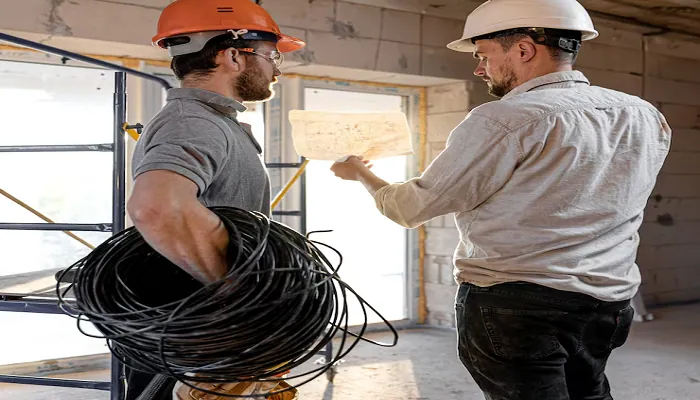
Importance of Safety Precautions in Electrical Work
Safety is the most critical aspect of any electrical work. Working with electricity is inherently dangerous, and even a small mistake can lead to serious injury or property damage. This is why it’s essential for building electricians to always prioritize safety. Following proper safety protocols not only protects the electrician but also ensures the safety of the building’s occupants.
Tips on Ensuring a Safe Working Environment
- Proper Use of Tools: Always use the correct tools for the job and make sure they are in good condition. Tools should be regularly inspected for wear and tear, and any damaged tools should be replaced immediately. For example, using insulated tools can prevent accidental shocks.
- Wearing Protective Gear: Personal protective equipment (PPE) is essential when working with electricity. This includes insulated gloves, safety goggles, and hard hats. Wearing appropriate PPE can significantly reduce the risk of injury from electrical shocks, flying debris, or falling objects.
- Understanding the Electrical System: Before beginning any work, it’s important to have a thorough understanding of the building’s electrical system. This includes knowing where the main power switch is located and ensuring that the power is turned off before starting any work. Labeling circuits and double-checking that the power is off can prevent accidental electrocution.
- Clear the Work Area: Keeping the work area clean and organized is crucial for safety. Ensure that there are no unnecessary objects lying around that could cause tripping or other accidents. Cords should be neatly arranged, and tools should be put away when not in use.
- Follow Local Codes and Regulations: Electrical work must comply with local building codes and regulations. These codes are in place to ensure that all electrical installations are safe and up to standard. Familiarize yourself with these regulations and follow them strictly.
By adhering to these safety tips, building electricians can create a safe working environment that minimizes risks and ensures that the electrical work is completed safely and efficiently.
Planning Electrical Layouts

The Significance of Planning the Electrical Layout
Planning the electrical layout is a crucial step before starting any construction or renovation project. A well-thought-out layout ensures that the electrical system is safe, efficient, and meets the needs of the building’s occupants. Without proper planning, you could end up with insufficient outlets, poorly placed lighting, or overloaded circuits, leading to inconvenience and potential hazards.
Tips on Organizing Circuits, Outlets, and Lighting
- Assess the Building’s Needs: Before designing the layout, consider how each room will be used. Identify areas that will need more power, such as the kitchen, which may require several outlets for appliances, or the living room, where entertainment systems will be plugged in. Knowing the specific needs of each room helps in determining the number and location of outlets and circuits.
- Organize Circuits for Efficiency: Grouping similar functions on the same circuit can help with efficiency and safety. For example, lighting can be placed on one circuit, while outlets are on another. This organization makes it easier to manage the electrical load and reduces the risk of overloading a single circuit. It also simplifies maintenance, as problems can be isolated more easily.
- Strategically Place Outlets: Position outlets where they will be most convenient for everyday use. In living areas, outlets should be placed every few feet to avoid the need for extension cords. In the kitchen, consider placing outlets above countertops and near appliances. Don’t forget to include outlets in places where you might need them for tasks like vacuuming or charging devices.
- Optimize Lighting Placement: Good lighting is essential for creating a comfortable and functional space. Plan the placement of lights to ensure even coverage without dark spots. Consider using a combination of overhead lights, task lighting, and accent lighting to create layers of light that can be adjusted depending on the time of day or activity.
- Future-Proof the Layout: Think about future needs when planning the electrical layout. This might include additional outlets for new technology or wiring for potential home automation systems. Planning ahead can save time and money if upgrades are needed later.
By carefully planning the electrical layout, building electricians can ensure that the electrical system is not only functional and safe but also adaptable to the changing needs of the building’s occupants.
Choosing the Right Materials
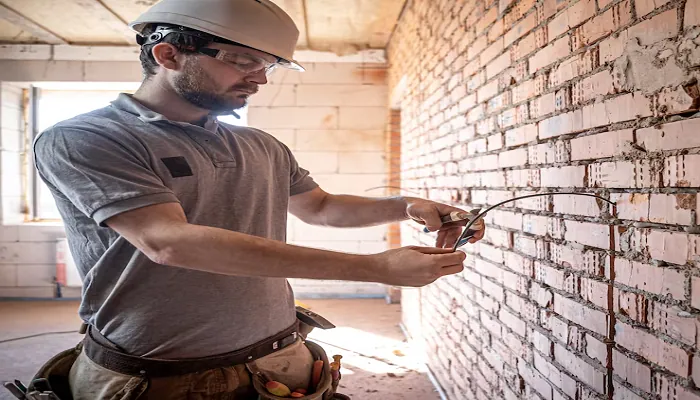
Importance of Using High-Quality Materials for Durability and Safety
When working on electrical projects, the materials you choose can make a significant difference in both the durability and safety of the installation. High-quality materials ensure that the electrical system will last longer, operate more efficiently, and reduce the risk of electrical failures, which can lead to hazards like fires or electrical shocks. Investing in good materials may seem more expensive initially, but it pays off in the long run by minimizing maintenance costs and improving safety.
Tips on Selecting the Best Wires, Conduits, and Electrical Components
- Selecting the Right Wires: Wires are the backbone of any electrical system, so it’s crucial to choose the right type and gauge. The gauge of the wire refers to its thickness, which determines how much electrical current it can safely carry. For general wiring in homes, 12-gauge or 14-gauge wires are commonly used, but higher gauge wires may be needed for appliances that draw more power. Always use wires that are rated for the specific conditions they will be exposed to, such as outdoor or underground installations.
- Choosing Quality Conduits: Conduits protect the wires from physical damage and environmental factors like moisture or chemicals. They are particularly important in areas where wires are exposed to the elements or in industrial settings. There are different types of conduits, such as PVC, metal, and flexible conduits. Choose a conduit that suits the specific needs of your project, considering factors like flexibility, strength, and resistance to corrosion.
- Using Reliable Electrical Components: Switches, outlets, circuit breakers, and other electrical components should be of high quality to ensure reliable performance. Cheap components might fail prematurely, leading to frequent repairs and safety risks. Look for components that are UL-listed or certified by other recognized testing laboratories, which indicates they meet safety standards.
- Considering Material Compatibility: Ensure that all the materials you select are compatible with each other. For example, when choosing connectors or fittings, make sure they are designed to work with the type of wire and conduit you are using. This compatibility helps prevent issues like poor connections, which can lead to electrical faults.
- Staying Up to Date with Codes and Standards: Electrical codes and standards exist to ensure safety and uniformity in electrical installations. Always choose materials that comply with the latest local codes and standards. This not only ensures safety but also avoids potential legal issues during inspections.
By choosing high-quality materials and ensuring compatibility, you can create an electrical system that is safe, durable, and efficient. This careful selection process helps prevent problems down the line and ensures that the electrical installation meets the highest standards.
Efficient Wiring Techniques
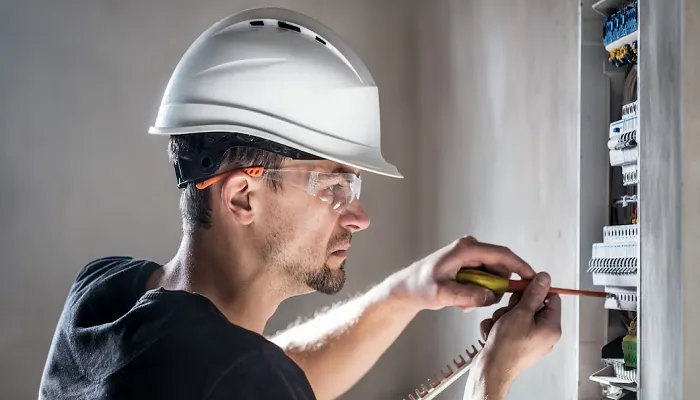
Advice on Using Efficient Wiring Techniques to Avoid Future Issues
Wiring is one of the most critical aspects of any electrical installation, and using efficient techniques can save you from a host of problems down the line. Efficient wiring not only ensures that the system runs smoothly but also reduces the chances of electrical faults that can lead to dangerous situations or costly repairs. By following some best practices, you can create a system that is both reliable and safe.
Maintenance and Troubleshooting
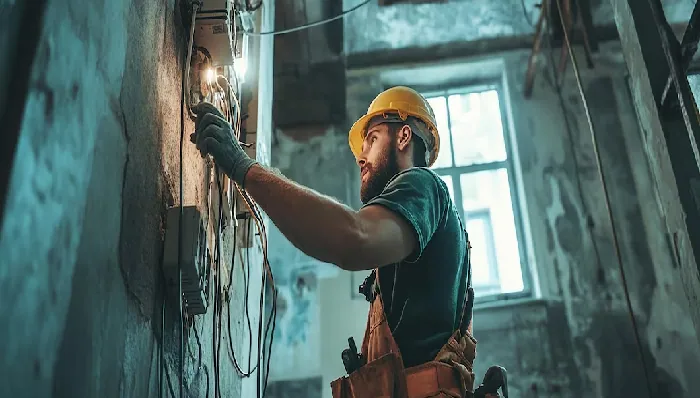
Importance of Regular Maintenance to Prevent Electrical Failures
Regular maintenance is crucial for keeping your electrical systems running smoothly and safely. Over time, electrical components can wear out, connections can become loose, and wiring can degrade. If these issues are not addressed, they can lead to serious problems like power outages, equipment damage, or even fires. By conducting regular maintenance checks, you can identify and fix minor issues before they become major problems. This not only ensures the safety of your home or building but also prolongs the lifespan of your electrical systems, saving you money in the long run.
Tips on Troubleshooting Common Electrical Issues
- Check for Loose Connections: One of the most common causes of electrical problems is loose connections. If you notice flickering lights, intermittent power, or outlets that don’t work properly, it could be due to a loose wire or connection. Carefully inspect the outlet or switch to ensure all wires are securely connected. If you’re not comfortable doing this yourself, it’s best to call a professional.
- Reset Tripped Circuit Breakers: If a circuit breaker trips, it’s usually because the circuit is overloaded, or there’s a short circuit. First, unplug any devices that might be overloading the circuit, then reset the breaker by flipping it fully to the off position before switching it back on. If the breaker continues to trip, it could indicate a more serious problem that requires professional attention.
- Test and Replace Faulty Outlets: If an outlet isn’t working, the first step is to test it using a device you know works, such as a lamp. If the outlet still doesn’t work, it might be faulty. You can replace the outlet yourself if you have experience with electrical work, but if you’re unsure, it’s safer to hire a professional electrician.
- Look for Signs of Wear and Tear: Regularly inspect your electrical systems for signs of wear and tear, such as frayed wires, scorch marks around outlets, or unusual sounds like buzzing or popping. These can be indicators of electrical problems that need immediate attention.
- When to Call a Professional: While some minor electrical issues can be handled with basic troubleshooting, others require the expertise of a professional electrician. If you’re dealing with frequent circuit breaker trips, flickering lights, or any situation where you’re unsure of the cause, it’s important to call a professional. They can diagnose the problem accurately and ensure it’s fixed safely.
By maintaining your electrical systems and knowing how to troubleshoot common issues, you can prevent many problems and ensure a safe, reliable electrical setup in your home or building.
Upgrading and Modernizing Systems
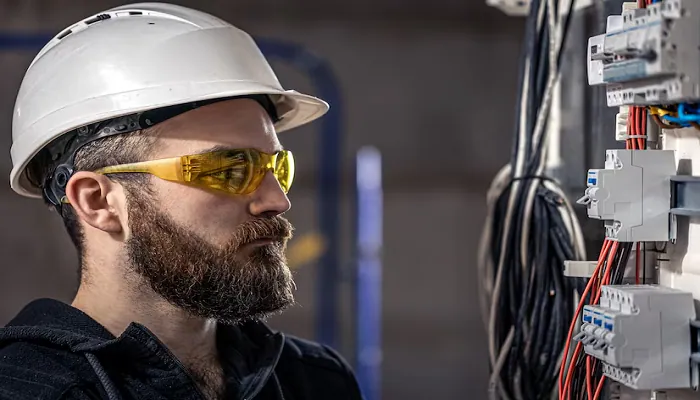
The Benefits of Updating Old Electrical Systems
Upgrading old electrical systems is essential for safety, efficiency, and convenience. Many older buildings still have outdated wiring, panels, and electrical components that may not meet modern safety standards. These outdated systems can be dangerous, leading to electrical fires, power surges, and frequent outages. By updating your electrical systems, you ensure that your home or building is safer and more reliable. Additionally, modern electrical systems are designed to handle the increased demand of today’s technology, reducing the risk of overloads and providing more consistent power delivery.
Improved Energy Efficiency
Upgrading your electrical system can also lead to significant energy savings. Modern systems are more efficient, reducing the amount of energy lost through heat and resistance in outdated wiring. Newer electrical components, such as circuit breakers and outlets, are designed to work more efficiently, further reducing energy consumption. Integrating energy-efficient solutions, such as LED lighting, programmable thermostats, and energy-efficient appliances, can also contribute to lower utility bills and a smaller carbon footprint.
Integrating Smart Technology
Modernizing your electrical system provides an excellent opportunity to integrate smart technology into your home or building. Smart technology allows you to control various aspects of your electrical system remotely, using a smartphone or other devices. This includes smart lighting, which can be adjusted based on your schedule, smart thermostats that learn your preferences and adjust automatically, and smart security systems that provide real-time alerts. These technologies offer convenience and can help you save energy by optimizing your electrical usage.
Tips on Upgrading and Modernizing
- Assess Your Current System: Before upgrading, have a professional electrician assess your current electrical system. They can identify outdated components that need to be replaced and recommend modern alternatives.
- Plan for Future Needs: When upgrading, consider your future electrical needs. If you plan to add new appliances or smart technology, ensure your system can handle the increased load.
- Choose Energy-Efficient Solutions: When selecting new components, opt for energy-efficient options. This not only saves you
In this guide, we covered essential tips from a building electrician to help you with your electrical work. We emphasized the importance of safety, including using protective gear and proper tools. Planning your electrical layout and choosing high-quality materials are crucial for efficiency and durability. Efficient wiring techniques, regular maintenance, and upgrading old systems to modern standards were also discussed. Always prioritize safety and quality in your electrical projects. By following these tips, you can ensure your work is safe, reliable, and effective.
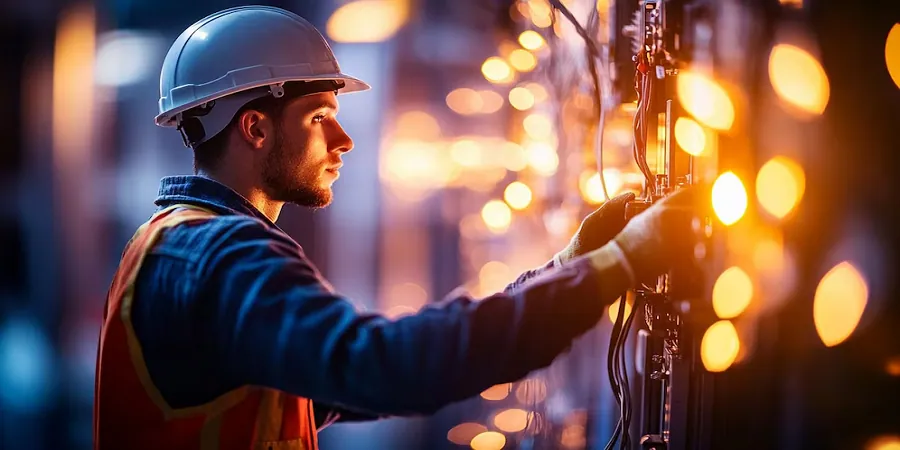
Comments